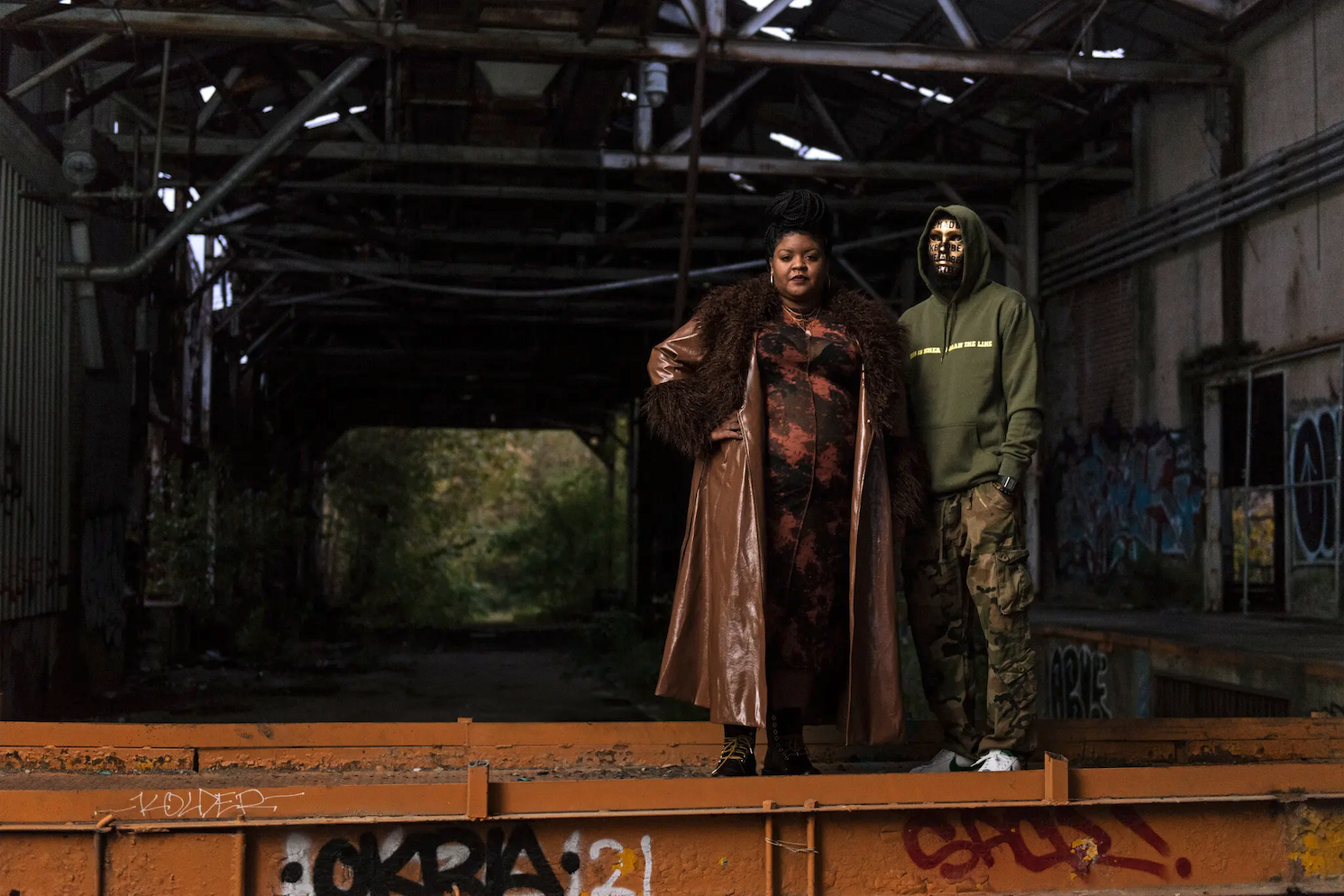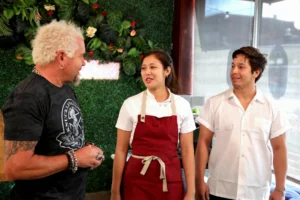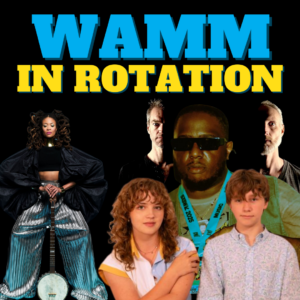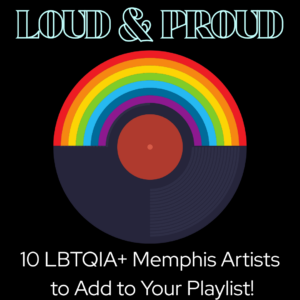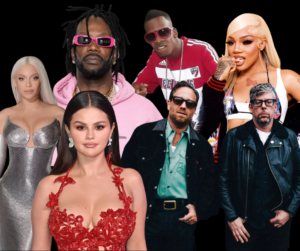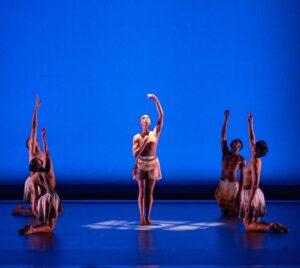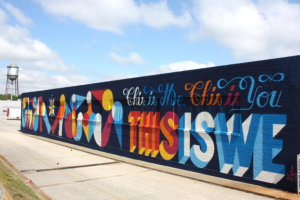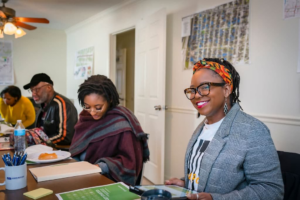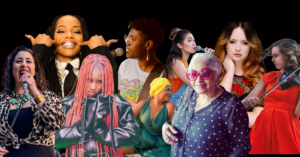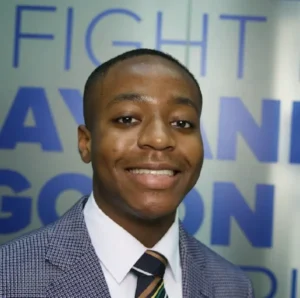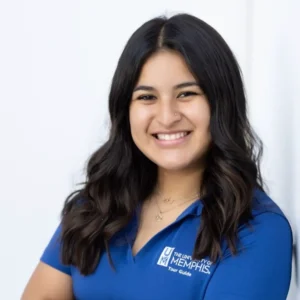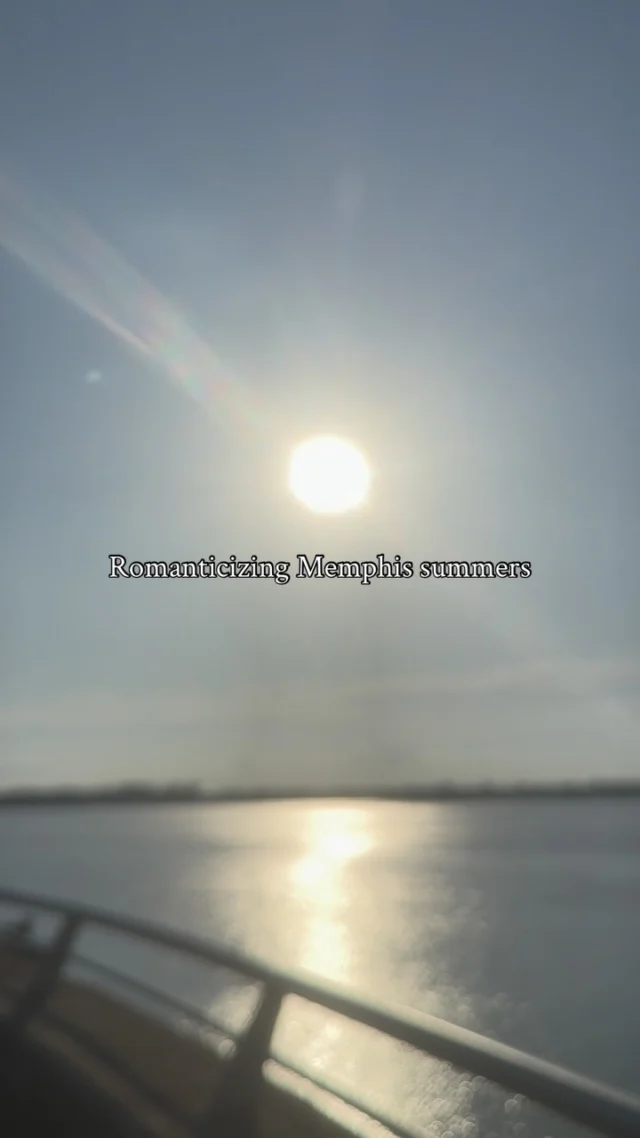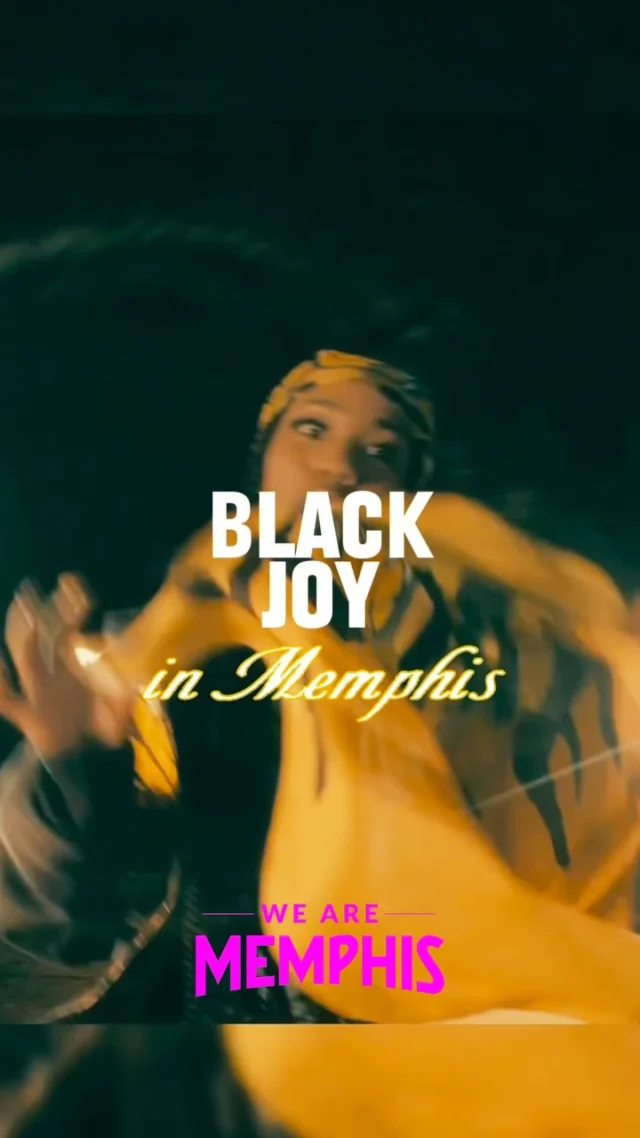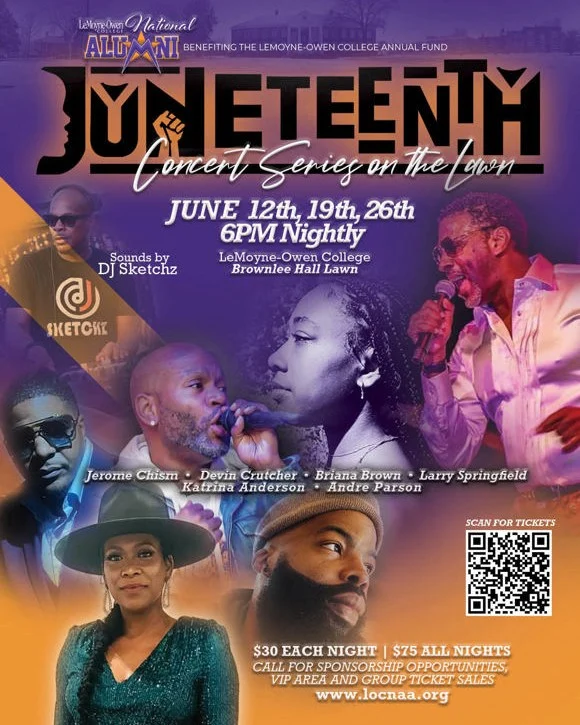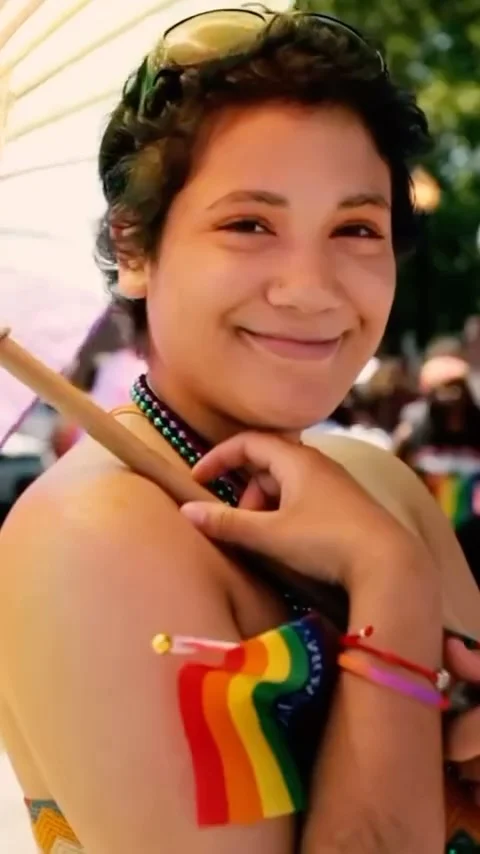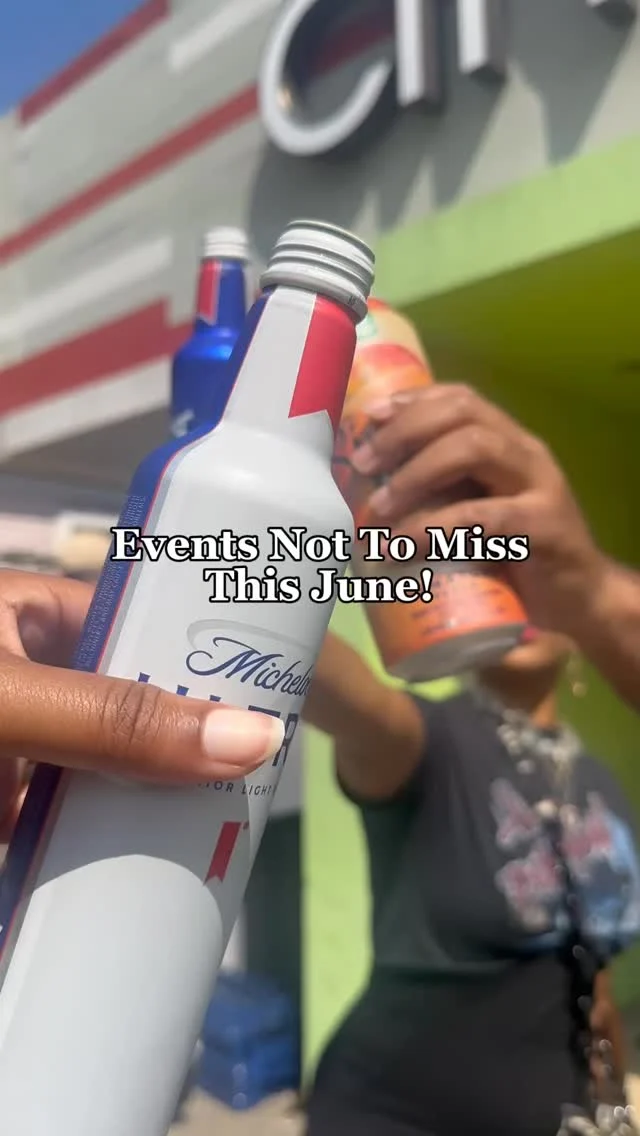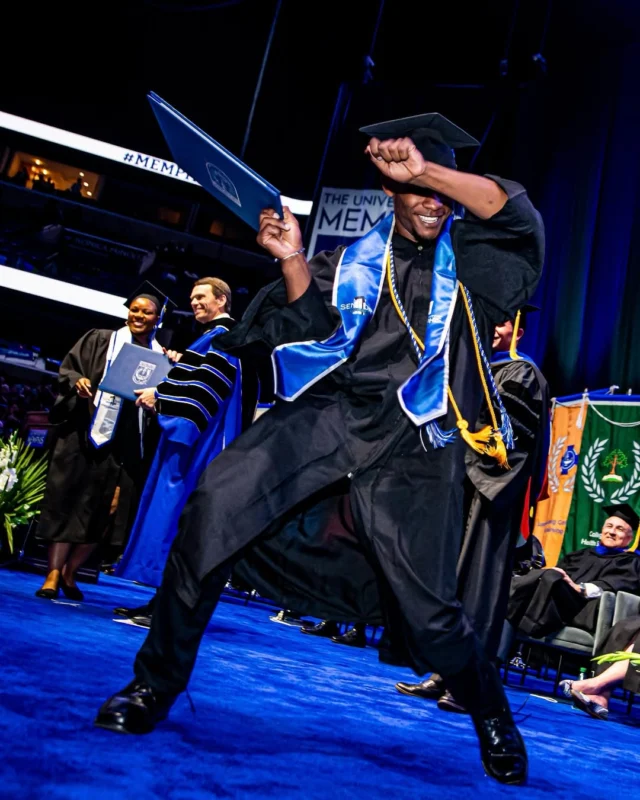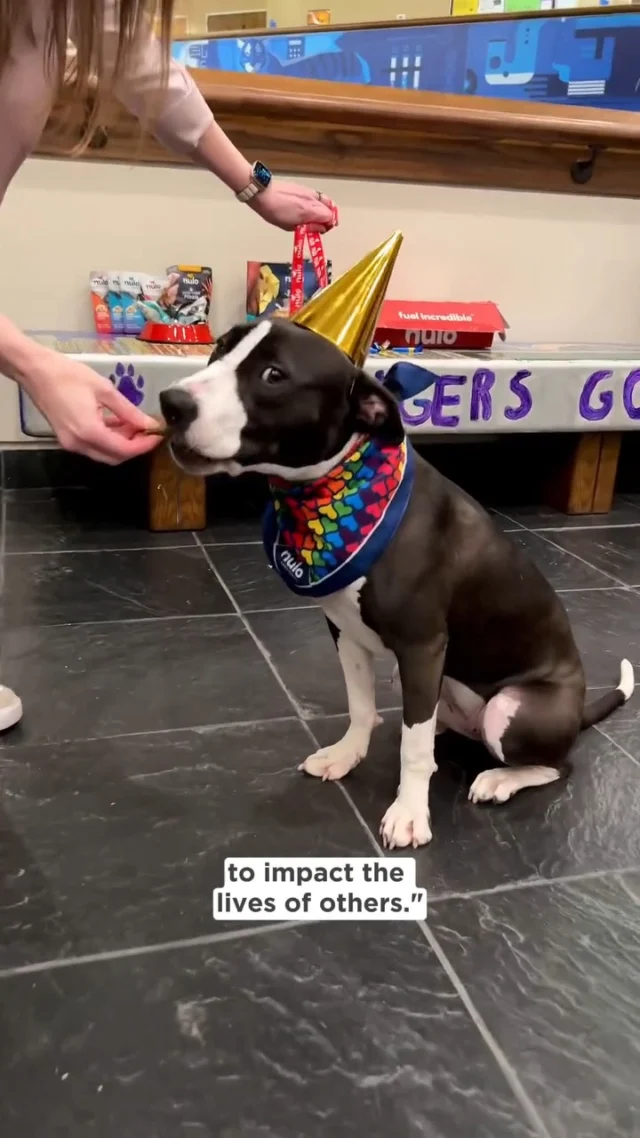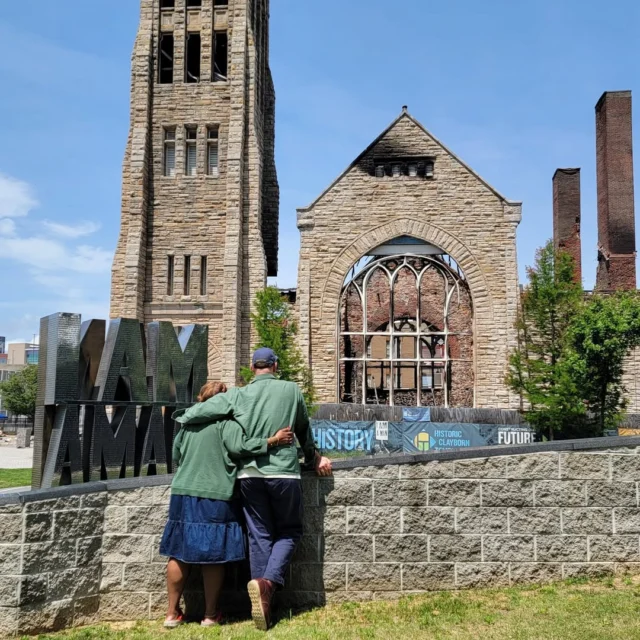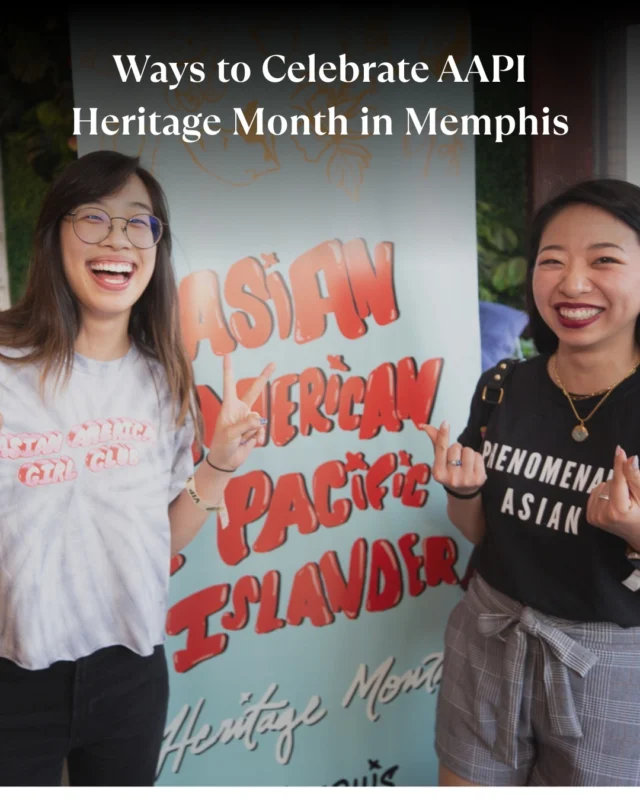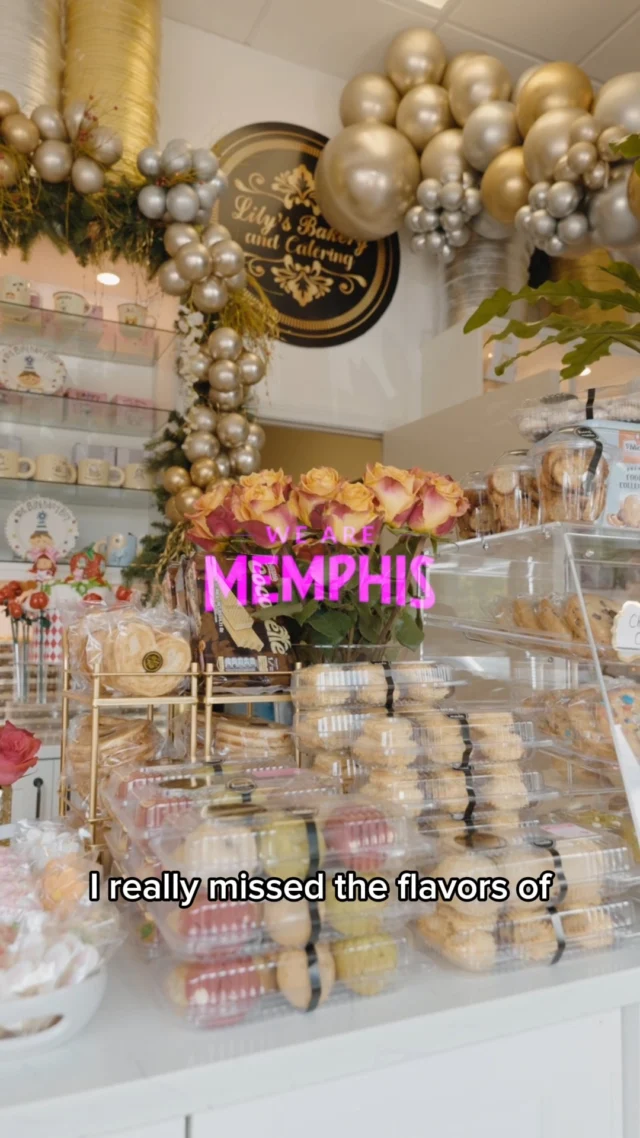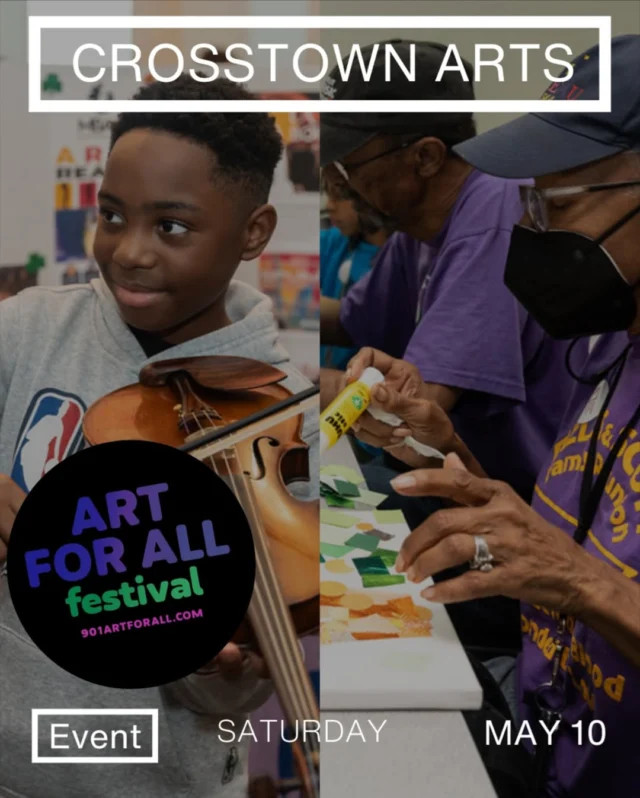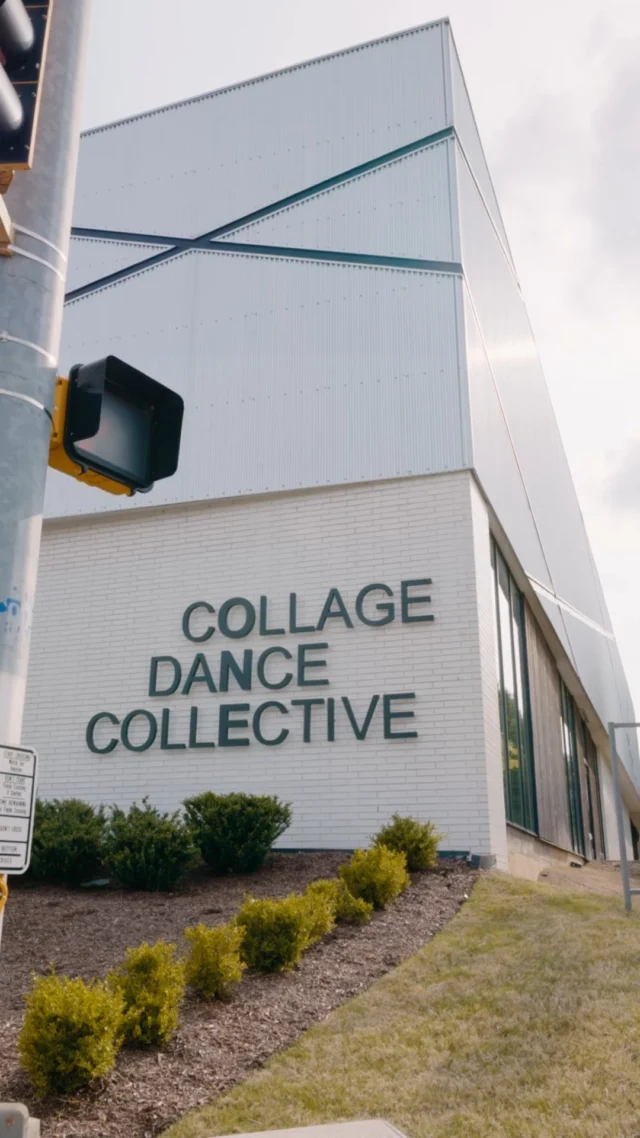Now, the celebration will continue (and flourish) with Orange Mound Tower. Formed by two founders of homegrown Black organizations (James Duke aka IMAKEMADBEATS of Memphis-based arts/music creative label UNAPOLOGETIC and Victoria Jones, executive director and CEO of TONE art gallery), the tower will double as a creative center and safe space where talent can both live and gather resources to flourish.
“We walked across the street, and I feel like it lowkey hit us at the same time: ‘Yeah this is it,’” James tells EDITION. “Feeling this limitless potential and possibility, and having no idea of how we were gonna get there, but knowing that this was the starting place for whatever it was gonna be.”
The pair purchased the United Equipment tower property in 2020, and have since been planning and fundraising necessary to transform it into apartments, office space and retail. It’ll officially break ground in June 2023 with plans to open by 2025.
Below, Jones and Duke reveal the journey of landing the tower and why it’s a necessity to preserve Memphi’s talent.
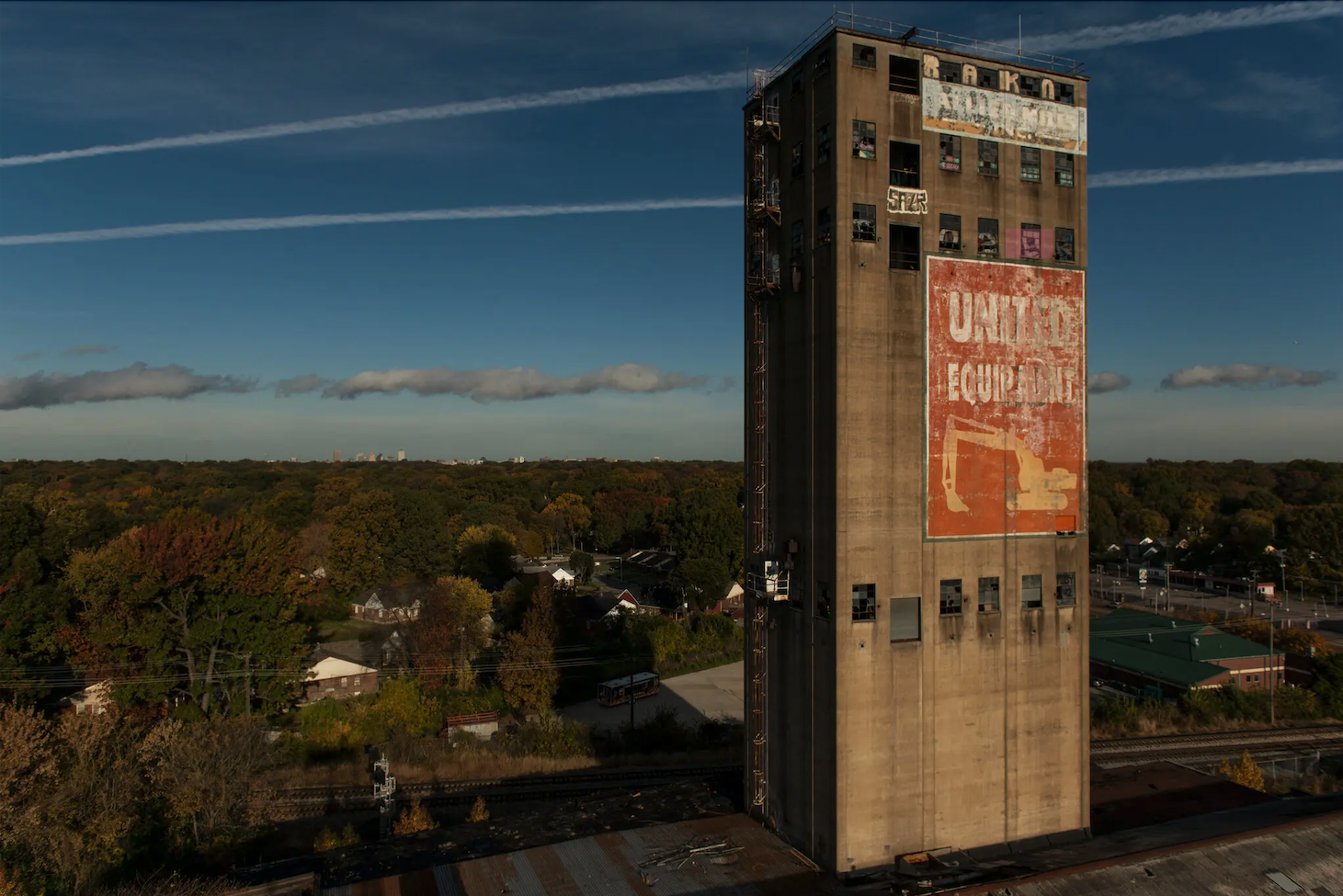
Orange Mound Tower photo by Brandon Dill
After learning that the initial reason for Orange Mound was to create affordable housing for Black people, I thought what you are doing is so significant. It’s this generational cycle where this place was originally for Black people to give them opportunity and now we’re doing the same thing for the millennial and Gen-Z generations. This is a place where they could flourish.
IMAKEMADBEATS: It’s everything you just stated. I get overwhelmed with questions about this because it is all of those things. But if I’m being real, 99% of the way I think about it is me walking down the street to the bus stop and going to the store every day, and where my grandma and auntie live. The history of it is extremely important, but most of my heart is in my family and the existence that we’ve had there. It’s extremely important for so many reasons. I don’t want to sound too magical, but I think all of this is a plan that is being carried out. I feel like [myself and Victoria] are instruments of said plan. I feel like the people who came before us set us up to do this. I do think the history of Orange Mound has played into who has been drawn to it, and the purpose those people feel once being there.
Myself and Victoria are two of many who are working to better this and further what is available and what is happening in such an important community. I always say, “Man, I’m just here to do my part.” It just so happens that this all is happening around this 230-foot tower that is visibly and aesthetically iconic. You said, Bianca, that you didn’t know the history of Orange Mound. Well, guess what: I lived there for 20 years, and I didn’t know either. (laughs) I think that’s just evidence of how this city does not celebrate or recognize things that are deeply rooted in Black history or Black importance. I mean, look at Harlem, they represent every day!
Oh yeah, we go hard for our boroughs up here.
IMAKEMADBEATS: Yeah, it’s a lot of pride. But you also get to see what that pride did to people in Harlem. I went to college with some Harlem bros––you couldn’t tell them nothin’!
I like that you said that you could see the tower. I always like to find messages behind everything, and I feel like just as Black people, we are always historically taught to be silenced and it’s “don’t say too much” or “stay in the background.” We don’t have an opportunity to showcase or flourish, and I love that you can see the tower from miles away and know that that is a Black monument. It feels good to show that whenever it’s a tourist like me or a local person from the city, they can see that and be like, “That’s a place that I can go to and feel welcomed.” Can you break down exactly what you’re envisioning for each room or floor in the tower?
Jones: We have what we’re thinking of as our “core tenants” or “core partners,” but there is still quite a bit of vacant space because we don’t want to lay all of it out without ensuring that all the voices at the table who need to be at the table are represented. I’ll name some of the things I’m excited about. On the talent side, to build out floors of gallery and performance space to start really archiving these stories and becoming this place where Black artists and curators can come to do some of their more experimental work that they might not be able to really see through in a white institution. We’ve already got to see some of the beginnings of that in our gallery across the street. Curators come into TONE and just get free rein and a nice budget, in place of having to do all of the explanation work that’s required if you’re in a white space before you can get to the actual storytelling that you want to do. Thinking of having floors worth of that kind of creative energy is really exciting to me. We’re also doing residencies, so we’ll have studio space and living space for artists in the tower. Just thinking about holding space for Memphis creatives but also inviting folks from outside of Memphis, [as well as] thinking about what this kind of push could be across the whole region.
When we were in Memphis I brought up the fact that you may feel that the city doesn’t always nurture or cater to its own, specifically with music. Rappers may go outside to Atlanta or L.A., or come up to New York to find that avenue to really make their career flourish. I want to get your thoughts on bringing the music and the creativity back into Memphis and keeping it there.
IMAKEMADBEATS: That is probably the question that started Unapologetic. I had to leave the city I lived in and loved to end up in New York to begin my career. When I came back, I saw other people doing the same. And I didn’t get it, because this place is touted as a music city. In fact, it’s not known for anything more than it’s known for its music. The number-one way I describe it is that Black creators are clearly the Vibranium of this Wakanda. Now, honestly, I think there’s something in the mix with the murder of Dr. King and I feel like a lot of things have not recovered since then, community-wise. But regarding artists having to leave––I’ve talked to so many artists who have left here. And years ago, I didn’t really have anything to tell them, other than “I feel you.” I would be a hypocrite to suggest anything otherwise because that’s what I did. And it worked out. I wanted to be a part of something creative where artists had a reason to stay here.
I’ve given very secret, long interviews to some of the most successful [artists] out of the city and the newer generation, just at my house: “What do we need here in Memphis to where you feel confident in bringing your success back here and helping other people not need to go somewhere else, but be able to stay here?” I say all the time, Memphis’ biggest issue is that we’re leaking talent. We’re sending our talent everywhere else to build and represent other communities, except for Memphis. And it’s just because those talents don’t want to just survive, they want to thrive. You can just survive here, but we’ve passed that. I use the term “Vibranium” and “Wakanda” very specifically. Because a lot of white people went to Africa and started taking it for themselves. But, when you look at the story of Wakanda, it was Black people who discovered their Vibranium and they built it in their community and kept it theirs. I stopped giving away free advice and I started to use it for a historically Black neighborhood. That way, it is our Wakanda.
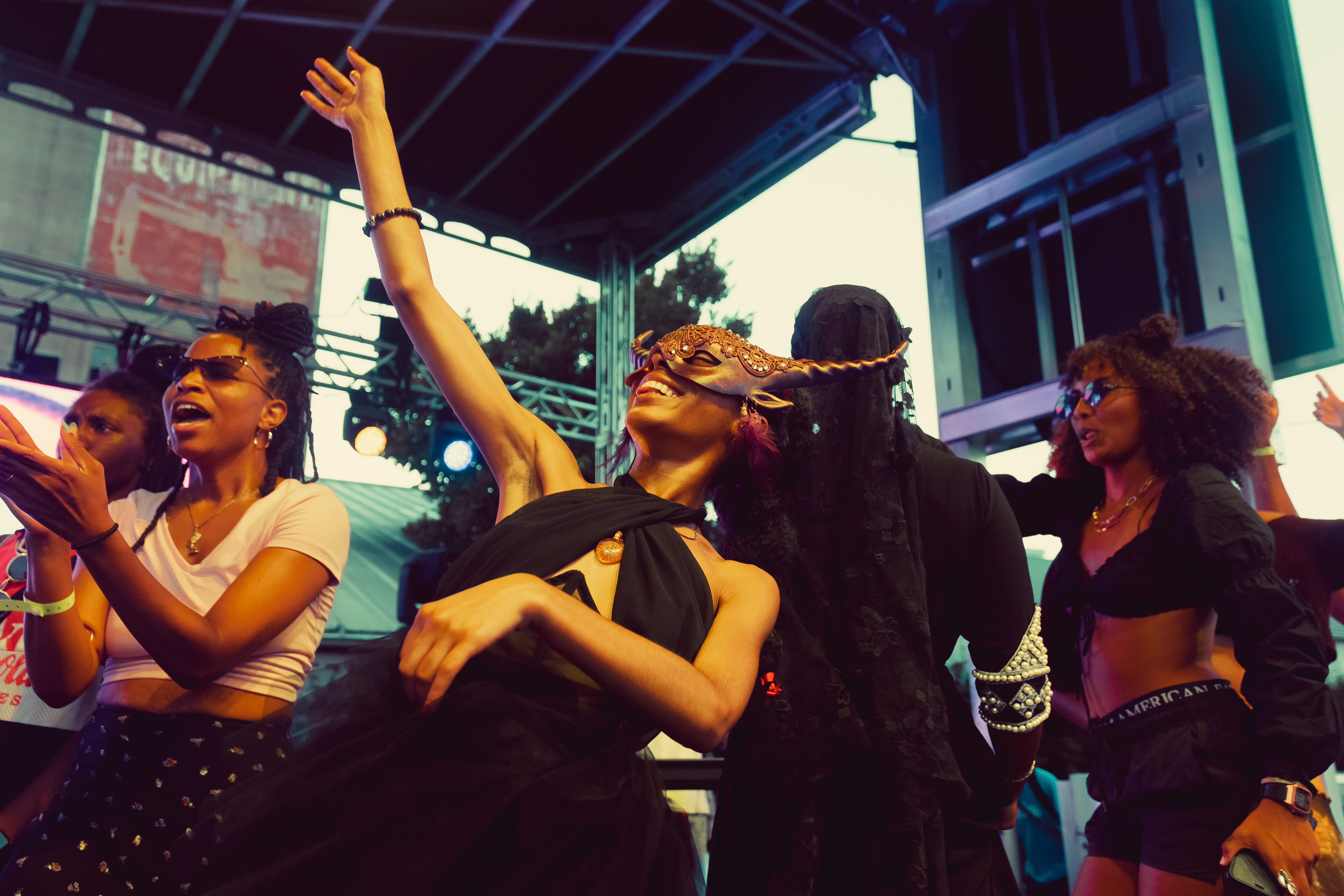 Orange Mound Tower Juneteenth celebration in 2021. Photo: Noah Stewart
Orange Mound Tower Juneteenth celebration in 2021. Photo: Noah Stewart
Victoria, you wanted to mention the partners involved.
Jones: So we got this art and culture section that sits at the core of it, but we’re also looking at the health and wellness aspects, education, tech, and small business incubation. We are not trying to build a space without something that’s future-facing. We are working with the Memphis Black Healers Collective and thinking about how we can center these Black thought leaders in the development of this space and then find opportunities for large institutions to support and empower that work. The University of Tennessee Health and Sciences already do a number of preventative care clinics. So I’ve been trying to figure out how we can carve out a wellness space that isn’t like a doctor’s office, but where I want to go when I want to be well. So thinking about the holistic wellness of Black folks through the Memphis Black Healers Collective and then being able to funnel the resources of the UTHealth to support that work. I think that is what’s gonna be a true effort in preventative care.
With education, we’re working with a group called The Collective Blueprint. They do job readiness work and just getting young Black and Brown folks the training they need to get a position in honorable, well-paying jobs. They’re also thinking about all the partners who can help folks get the high school diploma or GED that they need. We’re also working with Code Crew, which is a nonprofit here that is focused on tech, helping teach these young folks how to code and getting them placed in really great jobs. There’s so much happening in Orange Mound, especially right up Park Avenue. One of those developments is a really beautiful after-school program with Porter-Leath and RedZone. And then historic Melrose [high school building], which is being transformed into a genealogy center and senior living, so there’s a place for elders.
This art and culture piece is the purest way to crack people open to imagine their futures and to do healing work. So that’s why we centered it at the core. Then you wrap around all these things and as folks are cracking open to their needs, those spaces are a hall away from each other.
What do you think makes this city so magical?
Jones: Thinking about Memphis being one of those first stops, with people trying to escape the extreme racism and violence of a newly freed South in Mississippi, Memphis was one of the first stops. Everybody lowkey from Memphis anyway. Like, come on home! You just need to get hugged by your mama sometimes. This gives me goosebumps, but I got homies working in agriculture who talk about how great the dirt is here. It’s soil ready to be grown in. And that is the truth of this city right now––the healing that’s necessary for Memphis is gonna come through people coming here to grow themselves. Unapologetic, TONE, and Slim House––we’ve got these beautiful spaces for Black folks. Because there are so many of us here, there’s incredible potential in just welcoming folks back home to participate in the work. I don’t know if there’s another opportunity to do it like we could do it in Memphis.
We’ve got a ton of creative energy that’s just been untapped. Memphis leadership has really decided that this is a space for body labor. So we’ve got factories and all types of distribution hubs. But that has not carved out a ton of space to really lift up the innovation that exists here. What we did was pop open a hole wide enough for just a few of those voices to come to the surface. So the more times we do that, where folks are able to show up with their full selves and their full brilliance city-wide, that’s nuts! Again, it’s a Black-ass city and a beautifully innovative city. Folks are so used to making a way out of no way, that as soon as there is even something that looks like a potential way, you got folks ready to run for it. And that’s incredible. We’ve got ancestors making this sh-t happen. They’ve already ordained it so if y’all are coming to Memphis or not, that’s up to y’all. But I do know that’s where the magic gonna be.
IMAKEMADBEATS: I’m gonna have to tell a quick story. My mom is Guyanese, but she lived a lot in New York––Hempstead, Brooklyn––she would travel a lot. So I grew up in Memphis and every summer I would visit my mom. I knew this from maybe six or seven years old: there is no place on planet Earth like Memphis. As a kid, it felt like Memphis lived in a vortex. You walk into the music store here, and I see a picture of Three 6 Mafia. I remember when Eminem was popping off. You go anywhere, you’re talking about music, and Memphis was the only place where I found 90% of Memphis youth listened to Memphis rappers. If you listened to somebody from a state over, something was wrong with you. (laughs)
They be looking at you sideways, like…
IMAKEMADBEATS: For real! On the bus, you gotta at least be like, “I’m bumping this.” As I grew older and I witnessed more things, it played a lot into why I named my company “Unapologetic”––because Memphis is unapologetic! At a Grizzlies game––this is an NBA team with international visibility––you will find tens of thousands of people saying “whoop that trick” and swinging towels in the air, right? So for us, that’s normal. You take that somewhere else, it’s controversial. Memphis is boldly and daringly Memphis. We’re edgy in every way you can be edgy. In that willingness, openness, and ease of being daring, that’s where you find that innovation. In the nineties, I was going everywhere. I never heard––(imitates drum-kit sound) I never heard that nowhere else. Atlanta, Miami, I don’t care, I went everywhere. In Georgia, it was funk. In Miami, it was bass. In Memphis, it was triplet hi-hats, the snares, all of that. Lemme be clear, it came from Memphis when no one else was doing it. We weren’t trying to sound like what was poppin’ in New York or L.A.
That’s why I was so excited to visit Memphis––being a music lover and a music journalist myself, I see Young Dolph, rest in peace, GloRilla, Three 6 Mafia, Yo Gotti––you know they’re from Memphis because they’re so bold and so brash with it. There’s such a signature sound that I feel is so unique to the city and I love seeing that celebrated. For me to actually go to the city and see the dynamics of it is––you can’t really put it into words.
IMAKEMADBEATS: Memphis is historically known for its music, so it’s obvious why that would be the most visible or prevalent thing in showing how unapologetic Memphis can be. But if I’m being honest, one of the things I’m excited about with Orange Mound Tower, and just with the uprising of Blacks in general in this community, is showing that it’s not just the music. There’s so much more.

Orange Mound Tower interior. Photo: Brandon Dill
I’d love to know what’s coming up for TONE individually, and for Unapologetic.
Jones: We really are trying to figure out the Southern shift. There are a number of really exciting organizations and cultural institutions that are existing in the South right now. Our first step in that is working with the Every N–– Deserves team. They’re based outta Houston, but we’re heading to Miami in December for Art Basel and New Art Dealers Alliance (NADA). So we’ve got a booth at NADA and last year when we went, there just wasn’t anywhere for Black folks to kick it for real. So we’re going back to that spot and building out a show that highlights these brilliant and beautiful Black southern artists and thought leaders.
Thinking about across the board, how the gathering itself can be a touchpoint for Black southern curators, so they can start coming into the space and turnin’ up. But also thinking about musicians and filmmakers, and what happens when we build out a southern network of all these folks in different mediums, so we can find different ways to stop relying on these institutions that have existed forever and have been getting our story wrong for just as long.
Anything else coming up for Unapologetic? Anything to tease?
IMAKEMADBEATS: We officially announced the opening of our very first commercially available studio. It’s a long time coming. I’ve had a home studio my whole life, so now we got a full-on facility that I think will rival what currently exists in the city. We’re the first official collaborators with the Memphis Grizzlies on their merchandise, which launches in December. We’re gonna get back to the work we were supposed to do at the top of 2020, where we get back to our first national tour in March. And now that we have this facility, one of the things that I’m honestly most excited ab out is relaunching the Unapologetic Youth Program. In 2019, I launched the program where we essentially award a scholarship to a young rapper, who has to be in high school. We produce, mix and master a song for them, we do a music video for them, we interview them, we do a documentary on them, and then we throw an event for them––all to show them the process of it and to know how to live as an independent artist. I’m really excited about that. That’s it for the stuff not covered by an NDA. (laughs)
“This was originally published on “editionml.com”
You might also be interested in: Memphis Arts | Memphis Arts Scene
